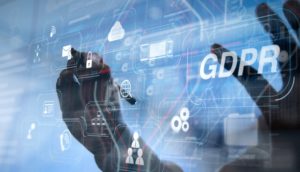
GDPR and the Transparency Revolution

(everything-possible/Shutterstock)
It’s been over a year since GDPR went into effect, and in that time, the regulation has driven a great deal of meaningful conversations around consumer privacy and enterprise data management policies. In an age where “data is the new oil,” fueling innovation and growth, enterprises face all kinds of new challenges when it comes to handling consumer data.
Large data breaches are constantly putting personal data at risk, and today, consumers are demanding greater transparency when it comes to the collection and use of their data, marking a shift from the days when everyone blindly accepted terms of service contracts from tech companies.
GDPR has forced companies to be honest and clear about how they leverage data now that consumers are paying more attention to the fine print. Individuals are more informed than ever before of their privacy rights and are exercising them accordingly, and organizations are finally beginning to understand the importance of demonstrating accountability and transparency with how they collect, handle, and transfer personal data. One slight misstep in the wrong direction, and enterprises may run the risk of hefty, crippling fines or worse: losing customers.
Thanks to GDPR, companies are finally realizing that while data is a hugely valuable asset, it is also a significant liability. Companies that fail to prioritize transparency around data privacy and protection aren’t just risking damage to financial profit and brand reputation, they’re also risking non-compliance with the most important overarching obligation of the GDPR. To get ahead of this, proactive organizations have already taken steps to ensure transparency and compliance in the age of GDPR.
Capturing Consent at Every Step of the Customer Journey
A large portion of the GDPR text is dedicated to regulating how businesses capture consent in an effort to demonstrate transparency. Updating a company’s privacy policy is a great start, but capturing consent by adding clear and concise language to every lead form, chat box, and email opt-in is ideal. Individuals should know exactly what they’re signing up for, and companies that give them the option to do so are taking a step in the right direction towards data transparency and accountability.
Adopt Data Minimization Practices
For awhile, professional data scientists were in high demand, and companies sought to amass and subsequently analyze as much data as possible to drive business innovation and growth. This mentality has changed in the wake of GDPR.
Businesses are adopting data minimization practices at collection or at retention so they can handle less but more meaningful data, and they’re putting policies in place to dispose of it when it’s no longer needed or useful. Ultimately, an organization’s best cybersecurity measure is to collect less data and encrypt it so that it’s safe in the event of a breach.
Consider Encryption and Data Distribution
Encryption is what makes personal data indecipherable to anyone who isn’t authorized to see it, and data distribution is what essentially bifurcates information files so they aren’t held all in one place where they would likely be more susceptible to a cyber attack.
Companies that care about their customers, employees, and vendors as much as they care about being GDPR-compliant should adopt data minimization practices and leverage technology to encrypt and distribute the small amount of data they do collect.
Don’t Skimp on Quality Cybersecurity
We live in a world where companies are collecting and handling more personal data than ever before, but holding any amount of data is risky if an organization isn’t doing enough to protect it.
The benefits of having less data to manage is that there’s less data to steal, but that shouldn’t exempt companies from implementing cybersecurity strategies and technologies that don’t just “tick the box” for GDPR compliance, but that are actually effective at thwarting cyber crime. New technologies exist that can provide data protection competence while still enabling companies to offer compelling and customized digital experiences for customers that give them confidence that their data isn’t being carelessly collected or processed.
It’s time for global organizations to proactively address the fact that data is both an asset and a liability by being more thoughtful about how much data they’re capturing instead of storing everything, unfiltered, for some unforeseen future use.
Companies need data to function–it’s an asset to every organization, and it would be unrealistic (and unfair) to ask a company to stop collecting it entirely. However, businesses that understand the risks associated with negligent data management practices will be better positioned to comply with GDPR and offer clarity to data subjects. Collecting only the most relevant information for a very specific purpose is not only easier to explain to individuals, but it also gives them confidence that you won’t misuse or abuse it.
It’s then up to you, the organization, to communicate transparently with your consumers and put processes in place to prioritize their personal data and handle it responsibly.
About the author: David Thomas is the CEO of Evident ID, a provider of online identify verification solutions. David has held key leadership roles at Motorola, AirDefense, VeriSign, and SecureIT. Since being recruited at a young age by the Department of Defense, David has been at the forefront of cybersecurity including firewalls as corporations began connecting to the Internet, Web security as online shopping emerged, wireless security as Wi-Fi and smartphones became ubiquitous, and security sensing networks as analytic technology became mainstream. He has been featured in CNN, The Wall Street Journal and other leading publications.
Related Items:
Capital One Hack Highlights Poor Data Security Practices
Big Data Security: Progress Is Made, But Is It Enough?
February 21, 2025
- SADA Recognized for AI, Security, and Data Analytics in Google Public Sector
- Gartner Survey Finds One-Third of CDAOs Cite Measuring Data, Analytics and AI Impact as Top Challenge
- Alabama Power and E Source Win DOE Prize for Data Analytics Innovation
- AWS and InfluxData Launch Amazon Timestream for InfluxDB Read Replicas
- Kioxia and Sandisk Unveil Next-Gen 3D Flash Memory Tech Achieving 4.8Gb/s NAND Interface Speed
- DataChat’s Gen AI Platform for Analytics on Track for Continued Growth in 2025
- Lucidworks Launches AI-Powered Commerce Studio and Analytics Studio, Available in New Fast-Start Packages
- Arize AI Secures $70M Series C to Expand AI Observability and LLM Evaluation
February 20, 2025
- Accenture Invests in Voltron Data to Help Organizations Use GPU Tech to Simplify Large-Scale Data Processing
- DDN Unveils Infinia 2.0 to Streamline AI Data Management and GPU Utilization
- Together AI Raises $305M Series B to Power AI Model Training and Inference
- Starburst Closes Record FY25, Fueled by Rising AI Demand and Growing Enterprise Momentum
- GridGain Brings Apache Ignite Community Together for Ignite Summit 2025
- Elasticsearch Open Inference API now Supports Jina AI Embeddings and Rerank Model
- HarperDB Named an IDC Innovator for Edge Inference Delivery
- EDB Postgres AI Outperforms Oracle, SQL Server, and MongoDB in New Benchmark
- CData and Ellie.ai Partner to Streamline Enterprise Data Modeling
- Privacera Aligns AI Governance with NIST Standards to Mitigate AI Risks
February 19, 2025
- OpenTelemetry Is Too Complicated, VictoriaMetrics Says
- What Are Reasoning Models and Why You Should Care
- Three Ways Data Products Empower Internal Users
- Keeping Data Private and Secure with Agentic AI
- PayPal Feeds the DL Beast with Huge Vault of Fraud Data
- Memgraph Bolsters AI Development with GraphRAG Support
- Three Data Challenges Leaders Need To Overcome to Successfully Implement AI
- What Leonardo DaVinci Teaches Us About Data Management
- Demystifying AI: What Every Business Leader Needs to Know
- Top-Down or Bottom-Up Data Model Design: Which is Best?
- More Features…
- Meet MATA, an AI Research Assistant for Scientific Data
- AI Agent Claims 80% Reduction in Time to Complete Data Tasks
- Snowflake Unleashes AI Agents to Unlock Enterprise Data
- DataRobot Expands AI Capabilities with Agnostiq Acquisition
- EDB Says It Tops Oracle, Other Databases in Benchmarks
- Collibra Bolsters Position in Fast-Moving AI Governance Field
- Microsoft Open Sources Code Behind PostgreSQL-Based MongoDB Clone
- AI Making Data Analyst Job More Strategic, Alteryx Says
- VAST Data Expands Platform With Block Storage And Real-Time Event Streaming
- Databricks Unveils LakeFlow: A Unified and Intelligent Tool for Data Engineering
- More News In Brief…
- Informatica Reveals Surge in GenAI Investments as Nearly All Data Leaders Race Ahead
- Gartner Predicts 40% of Generative AI Solutions Will Be Multimodal By 2027
- PEAK:AIO Powers AI Data for University of Strathclyde’s MediForge Hub
- DataRobot Acquires Agnostiq to Accelerate Agentic AI Application Development
- Cloudera Welcomes Tom Brady as Keynote Speaker at ELEVATE26
- Starburst Closes Record FY25, Fueled by Rising AI Demand and Growing Enterprise Momentum
- TigerGraph Launches Savanna Cloud Platform to Scale Graph Analytics for AI
- EY and Microsoft Unveil AI Skills Passport to Bridge Workforce AI Training Gap
- Alluxio Enhances Enterprise AI with Version 3.5 for Faster Model Training
- DeepSeek-R1 models now available on AWS
- More This Just In…





























